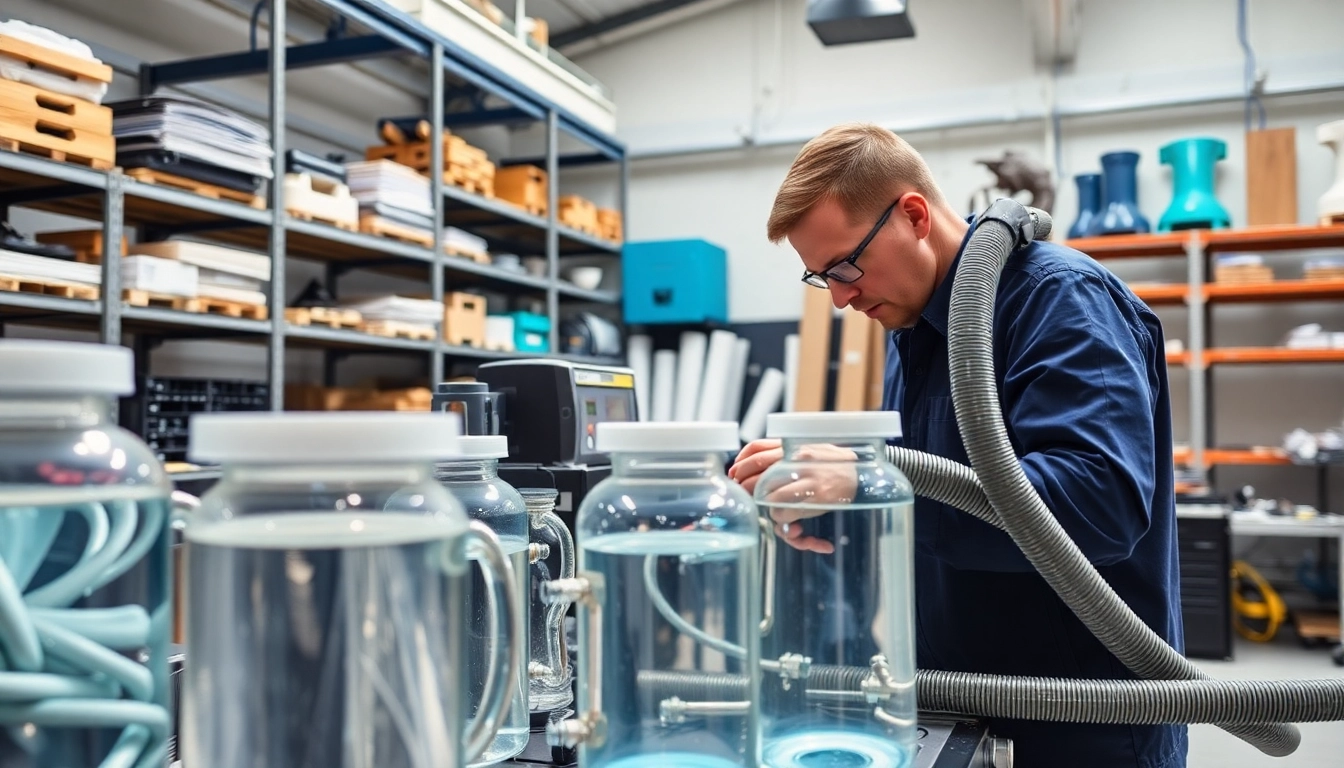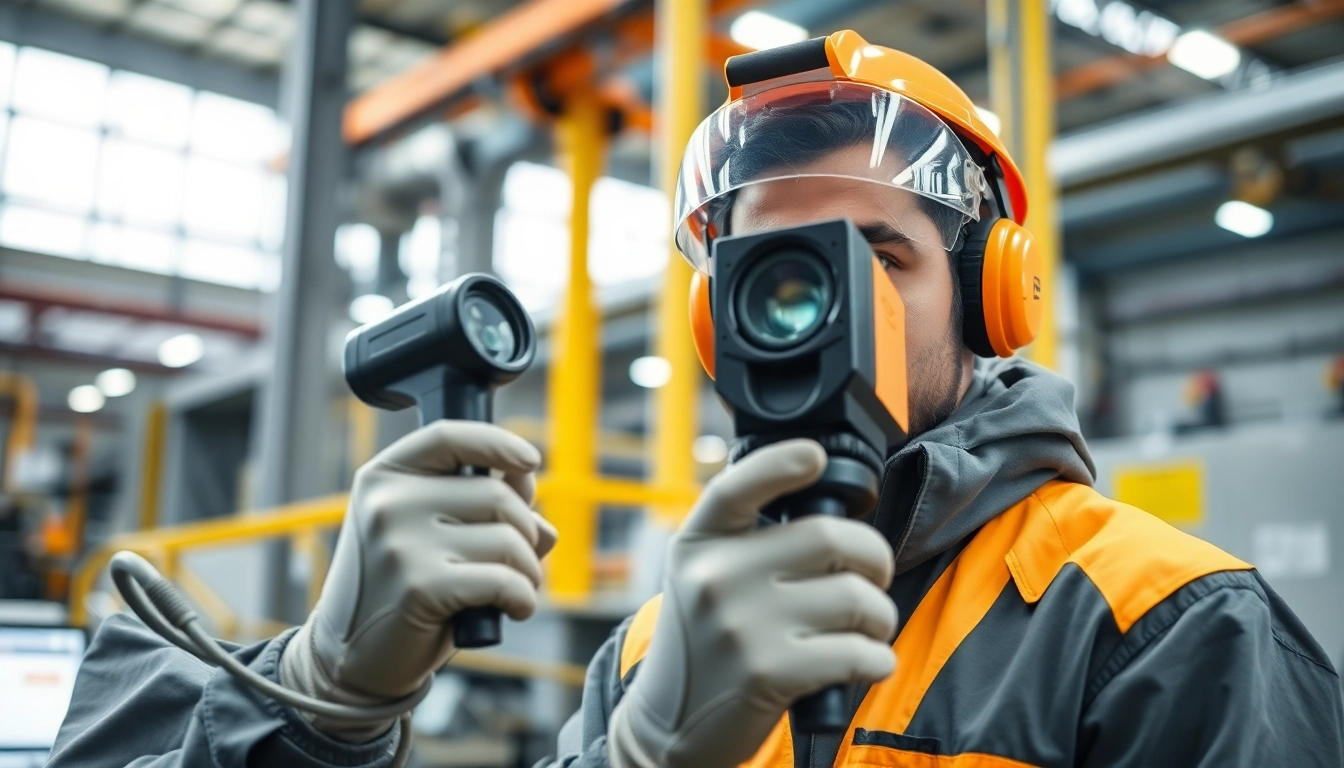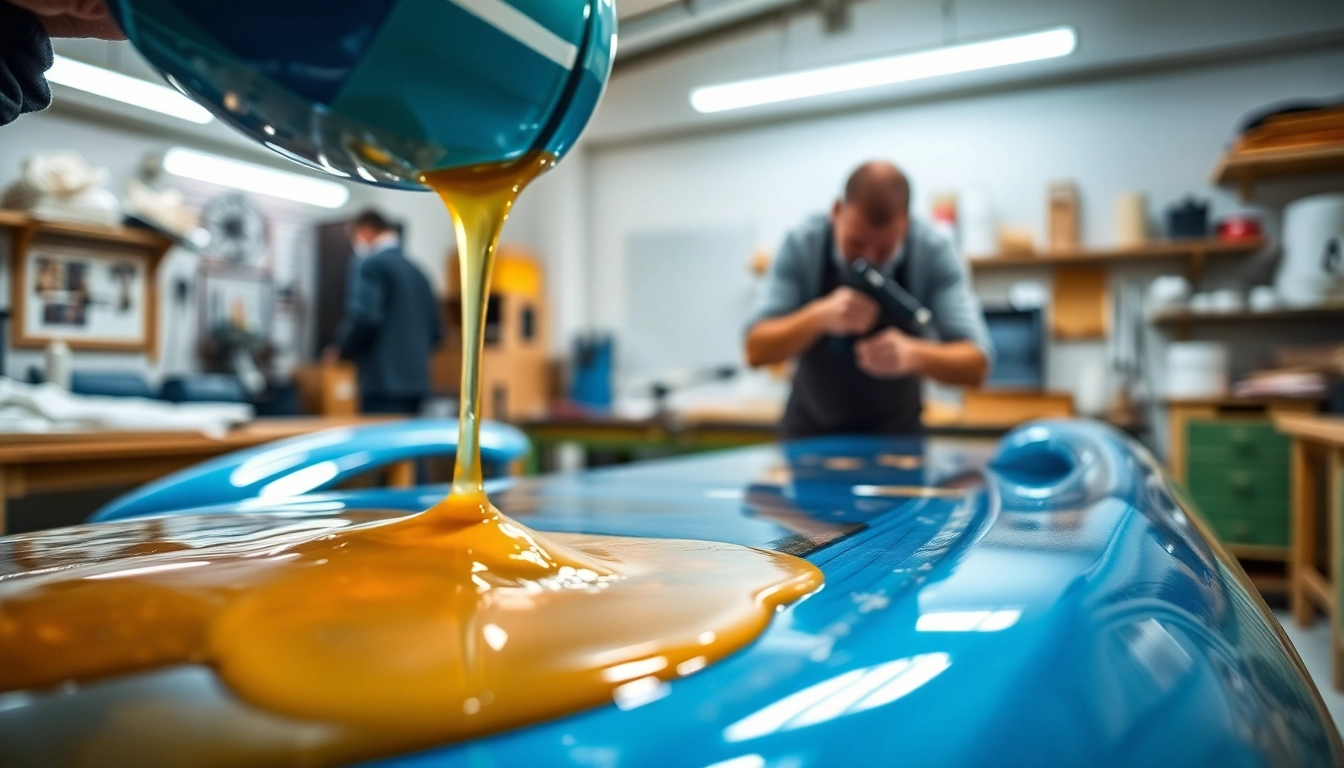Introduction to Infusion Resins
Infusion resins play a vital role in modern composite manufacturing, especially when it comes to creating lightweight structures with high strength. The infusion process is a popular method utilized in various industries, and understanding its intricacies can help manufacturers achieve optimal results. This article delves deep into infusion resins, their benefits, applications, and best practices for usage.
What are Infusion Resins?
Infusion resins are specialized epoxy formulations designed for the resin infusion process, where a low-viscosity resin is drawn into a dry fibrous material under vacuum. This unique attribute allows for enhanced flow characteristics, making them ideal for various thermal and structural applications. Typically, infusion resins are developed to provide excellent adhesion, clarity, and performance under stress, which are crucial for the integrity and durability of composite parts.
Benefits of Using Infusion Resins in Manufacturing
There are numerous benefits associated with the use of infusion resins in composite manufacturing:
- High Strength-to-Weight Ratio: Infusion resins yield lightweight components without compromising structural integrity.
- Improved Material Properties: These resins often provide better mechanical properties compared to traditional hand lay-up techniques.
- Reduced Air Entrapment: The vacuum process minimizes the possibility of trapped air bubbles, ensuring a more homogenous composite structure.
- Versatility: Infusion resins can be tailored to various applications, including marine, automotive, aerospace, and sporting goods industries.
- Efficient Production: The ability to combine multiple layers of materials with a single resin application reduces labor and material costs.
Applications of Infusion Resins
Infusion resins are used across various industries, including:
- Aerospace: For manufacturing lightweight, high-strength components such as wing structures and fuselage parts.
- Automotive: Utilized for parts like body panels and structural components, contributing to fuel efficiency.
- Marine: Essential for building boats and yachts, where strength and durability against harsh conditions are critical.
- Wind Energy: Crucial for producing blades that require a balance of lightness and durability.
- Sports Equipment: Used in high-performance sports gear and equipment, providing athletes with a competitive advantage through optimized designs.
Understanding the Infusion Process
Step-by-Step Guide to Resin Infusion
The resin infusion process is a multi-step procedure that ensures effective infiltration of the resin into the dry fiber material:
- Preparation of the Mold: The mold surface must be cleaned and coated with a release agent to prevent adherence of the composite to the mold.
- Laying Out Dry Fibers: Lay the dry fibrous material in the mold. Depending on the design, different layers and orientations can be utilized.
- Vacuum Bagging: Cover the laid fibers with a vacuum bag material. Seal the edges to create a tight vacuum system.
- Creating the Vacuum: Use a vacuum pump to remove air from the bag, thereby lowering the pressure inside. This step is critical to facilitate resin flow without air entrapment.
- Resin Injection: Inject the infusion resin through a port into the vacuum-sealed mold. The low viscosity of the resin allows it to flow freely through the dry fibers.
- Curing: Allow the resin to cure under a controlled temperature and pressure environment to achieve the desired mechanical properties.
- Demolding: Once cured, remove the vacuum bag and extract the composite part from the mold.
Key Equipment Required for Infusion
Utilizing infusion resins requires specific equipment to ensure a successful outcome:
- Vacuum Pump: Essential for creating the vacuum needed for resin flow.
- Vacuum Bagging Materials: Appropriate films, sealants, and breather fabrics are necessary to manage air and resin flow.
- Resin Injector: A device designed for controlled resin injection, often featuring multiple ports for complex mold designs.
- Temperature Control Systems: For specific resins that require elevated temperatures for curing.
Common Challenges in Resin Infusion
While resin infusion is a powerful manufacturing technique, several challenges may arise, including:
- Inconsistent Flow: Achieving a consistent resin flow can be difficult, particularly in complex molds with intricate designs.
- Incomplete Curing: Insufficient curing can compromise the strength and integrity of the composite part.
- Air Entrapment: Despite vacuum use, air bubbles can sometimes form if not managed properly.
- Material Compatibility: Choosing incompatible fiber and resin types can lead to poor adhesion and performance.
Choosing the Right Infusion Resins
Factors to Consider When Selecting Infusion Resins
When selecting the appropriate infusion resins, several factors should be taken into account:
- Viscosity: Ensure the resin’s viscosity is suitable for the specific infusion process and material being used.
- Curing Time: Different applications may require varying cure times to accommodate production schedules.
- Thermal and Mechanical Properties: Assess the properties needed for the final application, including temperature resistance and tensile strength.
- Environmental Resistance: Evaluate whether the resin will be exposed to chemicals, moisture, or UV light.
Comparison of Popular Infusion Resins
Understanding the differences in infusion resins can assist manufacturers in making informed choices. Here are some commonly used types:
- Epoxy Resins: Known for their excellent adhesion and mechanical properties. Suitable for high-performance applications.
- Polyester Resins: Often more affordable, but may not offer the same strength or durability as epoxies.
- Vinyl Ester Resins: Combines the favorable properties of epoxies and polyesters, offering good resistance to water and chemicals.
Testing and Evaluating Infusion Resins
Before finalizing a resin for production, it is crucial to conduct specific tests to ensure compatibility and performance:
- Viscosity Testing: Use rheometers to measure the resin’s flow properties before and after curing.
- Tensile Strength Testing: Verify the material’s resistance to being pulled apart to ensure it meets performance expectations.
- Heat Deflection Temperature: Test the temperature at which the material begins to deform under load.
Best Practices for Using Infusion Resins
Preparation and Setup Tips
Effective preparation can significantly influence the success of the resin infusion process:
- Clean Working Environment: Ensure that the workspace is clean to prevent contamination.
- Check Equipment Functionality: Make sure all tools, including the vacuum pump and resin injector, are operational before starting.
- Follow Manufacturer Guidelines: Always adhere to the resin manufacturer’s instructions for optimal results.
Safety Measures When Working with Infusion Resins
Safety is paramount when working with chemicals such as infusion resins. Consider the following safety measures:
- Personal Protective Equipment (PPE): Use gloves, goggles, and respirators as recommended to protect from fumes and contact.
- Ventilation: Ensure adequate ventilation in the workspace to disperse fumes.
- Material Safety Data Sheets (MSDS): Familiarize yourself with the MSDS for the resin being used for information on hazards and emergency procedures.
Common Mistakes to Avoid
An awareness of common pitfalls can help streamline the resin infusion process:
- Skipping Vacuum Testing: Always conduct a vacuum test before infusion to ensure there are no leaks.
- Ignoring Temperature Control: Proper temperature management is vital during both curing and application phases.
- Underestimating Cure Times: Ensure enough time is allocated for curing; hurrying could weaken the final product.
Future Trends in Infusion Resins
Innovations in Resin Technology
The field of infusion resins is continually evolving, with innovations aimed at enhancing performance and sustainability. Some promising developments include:
- Smart Resins: Future formulations may incorporate sensors to monitor conditions during curing.
- High-Performance Alternatives: Research is ongoing to develop resins that offer improved thermal stability and mechanical strength.
- Hybrid Systems: Combining resin types to achieve specialized properties for diverse applications.
Sustainability in Infusion Resins Manufacturing
Manufacturers are increasingly focused on sustainability, leading to the development of eco-friendly infusion resins:
- Bio-based Resins: Utilizing renewable resources to create resins reduces dependence on petrochemicals.
- Recyclability: Focus on developing resins that can be recycled or reused helps in minimizing waste.
Forecasting Demand for Infusion Resins
The demand for infusion resins is expected to grow as industries continue to seek lightweight, durable materials. Key factors influencing this growth include:
- Increased Production of Renewable Energy Components: Higher production of wind and solar energy components necessitates lightweight composite materials.
- Advancements in Automotive Design: Striving for fuel efficiency in transportation leads to growing use of infusion resins in vehicle manufacturing.
- Technological Innovations: New applications in sectors like aerospace and consumer goods are set to increase as technology evolves.



